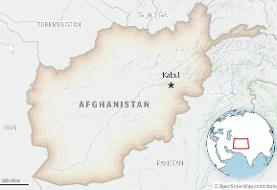Iranian Men Grew Tallest in the World, New Research Explains
Health and Science News Blog, Kodoom.com
As population growth rates and family sizes have shrunk in Iran, a global study conducted by Eduardo Franco at McGill University shows the largest gain in adult height over the past century has occurred in South Korean women and Iranian men, who became 20.2 cm (95% credible interval 17.5–22.7) and 16.5 cm (13.3–19.7) taller, respectively. The research reanalysed 1472 population-based studies, with measurement of height on more than 18.6 million participants to estimate mean height for people born between 1896 and 1996 in 200 countries.
In contrast to Iran, there was little change in adult height in some sub-Saharan African countries and in South Asia over the century of analysis. The tallest people over these 100 years are men born in the Netherlands in the last quarter of 20th century, whose average heights surpassed 182.5 cm, and the shortest were women born in Guatemala in 1896 (140.3 cm; 135.8–144.8). The height differential between the tallest and shortest populations was 19-20 cm a century ago, and has remained the same for women and increased for men a century later despite substantial changes in the ranking of countries.
The researchers argue that given its association with economic development, the average adult height of a population may be a useful indicator of access to nutrition and exposure to disease environments, representing a “biological standard of living.” A recent study found that between 43% and 68% of increases in adult height in Brazil between 1950 and 1980 were associated with increases in gross domestic product per capita.
The researchers found that some of the most important changes in height have happened in under-investigated populations. In particular, South Korean and Japanese men and women, and Iranian men, have had larger gains than European men, and similar trends are now happening in China and Thailand. These gains may partially account for the fact that women in Japan and South Korea have achieved the first and fourth highest life expectancy in the world (see also below). In contrast to East Asia’s impressive gains, the rise in height seems to have stopped early in South Asia and reversed in Africa, reversing or diminishing Africa’s earlier advantage over Asia. Prior studies have documented a rise in stunting in children in sub-Saharan Africa which continued to the mid-1990s. The results indicate that such childhood adversity may have carried forward to adulthood and be affecting health in the region. The early African advantage over Asia may also have been partly due to having a more diverse diet compared to the vegetable and cereal diet in Asia, partly facilitated by lower population density. Rising population, coupled with worsening economic status during structural adjustment, may have undermined earlier dietary advantage.
Men born in 1996 surpass average heights of 181 cm in the Netherlands, Belgium, Estonia, Latvia and Denmark, with Dutch men, at 182.5 cm (180.6–184.5), the tallest people on the planet. The gap with the shortest countries – Timor-Leste, Yemen and Laos, where men are only ~160 cm tall – is 22–23 cm, an increase of ~4 cm on the global gap in the 1896 birth cohort. Australia was the only non-European country where men born in 1996 were among the 25 tallest in the world. Women born in 1996 are shortest in Guatemala, with an average height of 149.4 cm (148.0–150.8), and are shorter than 151 cm in the Philippines, Bangladesh and Nepal. The tallest women live in Latvia, the Netherlands, Estonia and Czech Republic, with average height surpassing 168 cm, creating a 20 cm global gap in women’s height.
Male and female heights were correlated across countries in 1896 as well as in 1996. Men were taller than women in every country, on average by ~11 cm in the 1896 birth cohort and ~12 cm in the 1996 birth cohort. In the 1896 birth cohort, the male-female height gap in countries where average height was low was slightly larger than in taller nations. In other words, at the turn of the 20th century, men seem to have had a relative advantage over women in undernourished compared to better-nourished populations. A century later, the male-female height gap is about the same throughout the height range. Changes in male and female heights over the century of analysis were also correlated, which is in contrast to low correlation between changes in male and female BMIs as reported elsewhere.
Greater height in adulthood is both beneficially (cardiovascular and respiratory diseases) and harmfully (colorectal, postmenopausal breast and ovarian cancers, and possibly pancreatic, prostate and premenopausal breast cancers) associated with several diseases, independently of its inverse correlation with BMI(body mass index).
Related to Health:
- Australian Diplomat in Tehran Discusses Perfect Fessenjan Recipe, in Imperfect Persian!
- In Pictures: Laid-Back People of This Iranian City Ignore Coronavirus!
- Latest on Coronavirus: Mysterious Death, Forecast on Next Wave, New Conspiracy Claim
- Videos: Funny and Serious Coronavirus Advice, From Stock Market to Meat and Cruise Ships
- New Update on Coronavirus: From Naked Dentists to Real Death Toll
- This 1972 Study Predicted The Planet Would Revolt Against Humans in 2020
- From Camel's Urine to Trump's Favorite Drug: New Claims and Update on Coronavirus
- Shocking Claims About Coronavirus, Its Source and Detector to Iranian Artist's Depiction 8 Years Ago
- Videos: Snowden, Icke Warn People to Watch Their Civil Liberties Following Coronavirus
- Shocking Updates on Coronavirus: Coincidences, 5G, Iran, Saudi Arabia, US Updates; Bill Gates Predictions
- Spanish Prime Minister Quotes Persian Poet in Inspirational Speech to His Nation About Coronavirus
- Religious Sects in Iran and Israel Defy Official Coronavirus Guidelines
- See for Yourself: Quiet Streets and Clean Air in Tehran After Coronavirus
- We Are All in This Together! NOT! From Madonna to Gadot: Coronavirus Exposes the Ugly Truth About The Rich and Famous
- Videos: These Scientists Had Predicted Coronavirus Pandemic As Humans Damage Ecosystems























































